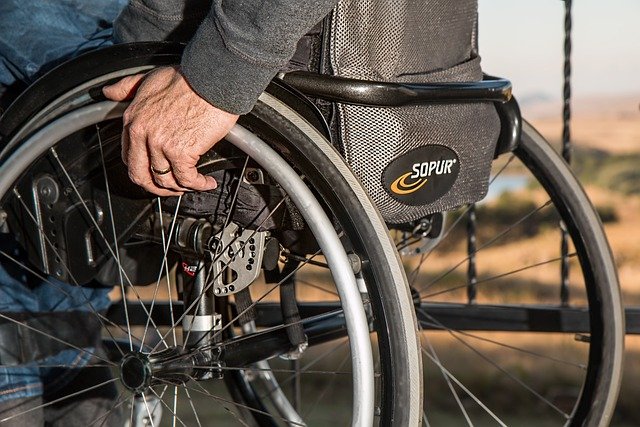The Essential Checklist for Buying a Certified Used Handicap Van
Purchasing a certified used handicap van requires careful evaluation to ensure safety, reliability, and proper functionality of mobility features. Understanding what to inspect, how to assess the vehicle's history, and where to buy can make the difference between a smart investment and a costly mistake. This comprehensive guide walks you through the critical steps to confidently evaluate a pre-owned accessible vehicle.

The Critical Inspection: 5 Must-Check Points on the Mobility Conversion
When evaluating a certified used handicap van, the mobility conversion itself demands thorough scrutiny. Start by examining the ramp or lift mechanism, ensuring it operates smoothly without unusual noises, jerking motions, or hesitation. Test it multiple times under load if possible, as mechanical failures often reveal themselves during repeated use.
Next, inspect the securement system for wheelchairs. Check that tie-down anchors are firmly attached to the vehicle floor and show no signs of rust, wear, or previous damage. The flooring around these points should be solid and free from rot or weakness. Verify that all safety belts and restraints function properly and meet current safety standards.
Examine the interior modifications carefully. Lowered floors should show professional workmanship with proper reinforcement and no gaps or uneven surfaces. If the van features a raised roof, inspect both interior and exterior seams for water damage or poor sealing. Check that handrails, grab handles, and other accessibility features are securely mounted and positioned appropriately.
The electrical system powering mobility equipment deserves special attention. Test all switches, controls, and automatic functions multiple times. Look for signs of amateur wiring or modifications that could indicate safety concerns. Request documentation showing the conversion was performed by a certified modifier following industry standards.
Finally, assess the overall condition of upholstery, padding, and interior surfaces. Worn or damaged materials may indicate heavy use or poor maintenance, potentially signaling other hidden issues with the conversion or base vehicle.
Mileage, Maintenance, and Rust: Vetting the Base Vehicle’s Health
Beyond the mobility conversion, the underlying vehicle must be mechanically sound. Begin by reviewing the odometer reading in context. Vans with 50,000 to 100,000 miles can offer good value if properly maintained, while those exceeding 150,000 miles require extra scrutiny regardless of price.
Request complete maintenance records showing regular oil changes, transmission services, brake work, and other routine care. Gaps in documentation or deferred maintenance should raise concerns. Pay particular attention to transmission health, as these vehicles often carry heavier loads than standard vans and transmission repairs can be expensive.
Conduct a thorough rust inspection, especially if the vehicle operated in regions using road salt. Check wheel wells, rocker panels, door edges, and the undercarriage. Surface rust may be manageable, but structural rust affecting frame components or floor pans represents a serious safety concern that can compromise both the vehicle and mobility equipment.
Examine the engine compartment for fluid leaks, worn belts and hoses, and signs of overheating. Test drive the van on various road surfaces, noting any unusual vibrations, pulling, or handling issues. Listen for transmission slipping, engine knocking, or brake grinding that could indicate costly repairs ahead.
Consider having a trusted mechanic perform a pre-purchase inspection. The modest cost of this service can reveal problems that might otherwise remain hidden until after purchase, potentially saving thousands in unexpected repairs.
Local Dealer vs. Private Sale: The Warranty and Certification Factor
The source of your purchase significantly impacts your protection and recourse options. Certified used handicap vans from established dealers typically include warranties covering both the base vehicle and mobility equipment. These warranties provide peace of mind and financial protection against unexpected failures during the coverage period.
Dealerships specializing in accessible vehicles often recondition their inventory, addressing mechanical issues and ensuring mobility equipment meets current safety standards. They can provide detailed vehicle histories, certification documentation, and financing options. Many also offer service departments familiar with mobility conversions, simplifying future maintenance needs.
Private sales generally offer lower prices but come with significantly more risk. Sellers provide vehicles as-is with no warranty protection. While you might negotiate a better deal, you assume full responsibility for any problems discovered after purchase. Private sellers may lack complete maintenance records or certification documentation for the mobility conversion.
When considering private sales, verify the seller’s ownership and ensure no liens exist against the vehicle. Request a vehicle history report to check for accidents, title issues, or odometer discrepancies. Be particularly cautious of sellers unwilling to allow independent inspections or provide documentation about the conversion work.
Local dealers in your area may offer advantages over distant sellers, including easier access for warranty service, local reputation considerations, and the ability to physically inspect vehicles before committing. Research dealer reviews and ratings, and verify their credentials with organizations like the National Mobility Equipment Dealers Association.
| Provider Type | Typical Price Range | Warranty Coverage | Key Considerations |
|---|---|---|---|
| Certified Dealer | $25,000 - $55,000 | 3-12 months comprehensive | Professional reconditioning, financing available, service support |
| Independent Dealer | $18,000 - $45,000 | Limited or as-is | Variable quality, less overhead costs, limited recourse |
| Private Seller | $15,000 - $40,000 | None (as-is) | Lowest prices, highest risk, buyer responsible for all issues |
| Manufacturer Certified | $30,000 - $60,000 | Extended coverage available | Highest standards, premium pricing, best warranty options |
Prices, rates, or cost estimates mentioned in this article are based on the latest available information but may change over time. Independent research is advised before making financial decisions.
Documentation and Legal Considerations
Proper documentation protects your investment and ensures legal compliance. Verify that the mobility conversion includes certification from the modifier showing compliance with Federal Motor Vehicle Safety Standards. This documentation proves the conversion was performed professionally and meets safety requirements.
Review the vehicle title carefully, ensuring it accurately describes the van and shows no salvage or rebuilt designations unless disclosed. Some states require special inspections or certifications for modified vehicles, so research local requirements before finalizing your purchase.
Obtain and review a comprehensive vehicle history report from services like Carfax or AutoCheck. These reports reveal accident history, previous owners, title status, and reported maintenance. Red flags include multiple owners in short periods, accident damage, or inconsistent mileage reporting.
If financing the purchase, understand that lenders may have specific requirements for modified vehicles. Some offer specialized loans for accessible vehicles with favorable terms. Compare rates and terms from multiple lenders, including banks, credit unions, and dealer financing options.
Consider how the purchase affects insurance costs. Notify your insurance provider about the mobility equipment, as standard policies may not fully cover these modifications. Some insurers offer specialized coverage for accessible vehicles that protects both the base vehicle and conversion components.
Making Your Final Decision
Purchasing a certified used handicap van represents a significant investment requiring careful evaluation. Prioritize vehicles with documented maintenance histories, professional mobility conversions, and reasonable mileage. Balance price considerations against warranty protection and the reputation of the seller.
Take time to test all mobility features thoroughly under realistic conditions. Ensure the van meets the specific needs of its intended user, with appropriate space, accessibility features, and comfort. Rushing this decision can lead to purchasing a vehicle that fails to serve its purpose effectively.
By systematically inspecting the mobility conversion, vetting the base vehicle’s mechanical condition, and carefully choosing between dealer and private sale options, you can confidently select a used handicap van that provides safe, reliable transportation for years to come. Remember that the lowest price rarely represents the best value when accessibility, safety, and dependability are paramount concerns.




